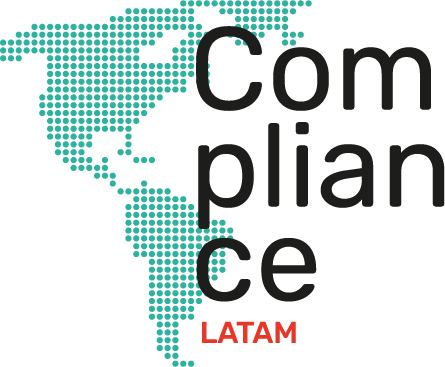
07-09-2023 | Noticias-en
The Ministry of Labor, Employment and Social Security established the modification of labor inspection, inspection and surveillance procedures. In that sense, it revoked Resolution 1655/2022 and article 17 of Resolution 56/2017, which provided for the administrative and procedural procedures for requesting and verifying documents of mandatory physical possession.
Resolution 1655/2022 established that notifications issued within the framework of inspections in relation to the requirements for the presentation of mandatory possession documentation must have prior authorization from the general director of the General Directorate of Labor Inspection and Supervision (DGIFT). .
Article 17 of Resolution 56/2017 established that the Director General of the DGIFT could request preventively, through notes of requirement or collated to employers, the presentation of mandatory possession documentation, within a specified period, for the purposes of verify compliance with labor standards and Occupational Health and Safety. It also established that, in the event of non-submission of the requested documentation, the Director of the DGIFT may request an inspection order for its completion.
In this sense, the new provisions of the MTESS regarding inspection, inspection and labor surveillance procedures establish that:
Mandatory labor documentation should not be required from any company nationwide for notes, notifications, other documents or procedures other than within the framework of actions authorized by an Inspection Order issued by the Highest Institutional Authority – the Minister of I work, currently Monica Recalde.
As of August 18, 2023, no notification of documentary requirements within the framework of the repealed resolutions is valid.
Mandatory possession documents may be presented electronically. This point is currently pending implementation.
Additionally, the MTESS mentions that they are working on the preparation of an Inspection Manual.
For more information contact:

Carla Arellano | Counselor Ferrere | carellano@ferrere.com

02-08-2023 | Noticias-en
Artificial intelligence (AI) has experienced an exponential boom around the world, and Latin America is no exception. Over the past decade, the region has embraced emerging technology, and one area where it has left a significant mark is in the field of compliance auditing. The application of AI in audit processes is transforming the way companies, government institutions and non-profit organizations ensure compliance with regulations and rules.
The challenge of Compliance audits in Latin America
The regulatory landscape in Latin America has evolved rapidly in recent years. With a wide range of rules and regulations in various industries, ensuring compliance with all applicable laws has become a constant challenge for organizations. Traditional compliance audits involved extensive manual processes and a high degree of subjectivity in decision making, which often resulted in inefficiencies and costly errors, indicates the Economic Commission for Latin America and the Caribbean (ECLAC).
The advent of AI has revolutionized the way compliance audits are conducted in the region. Machine learning and natural language processing capabilities have allowed large organizations that have a high degree of complexity in their operations and usually have operations in much of the region, automate and optimize their audit processes.
Some of the key aspects in which AI has positively impacted are:
• Large-scale data analysis: AI can process large volumes of data in real time, allowing companies to more quickly and accurately identify and assess potential risks.
• Detection of abnormal patterns: AI algorithms can identify unusual patterns or atypical behavior in financial and operational data, helping to detect potential fraud or irregularities that might otherwise go unnoticed.
• Automation of repetitive tasks: AI enables the automation of routine tasks in the audit process, freeing up auditors to focus on more strategic analysis and informed decisions.
• Improved accuracy and reliability: AI removes much of the subjectivity in compliance assessments, providing more objective and reliable results.
• Agility in compliance: The implementation of AI in audits allows a faster response to regulatory changes and an agile adaptation to new regulations.
AI adoption in Latin America
Although the use of AI in compliance audits is constantly growing in Latin America, there are still challenges to face. Among them, the training of personnel to use these new tools and guarantee data protection and information security.
In this sense, the Chilean case is quite interesting. According to a study by the Universidad del Desarrollo in 2023, a certain sector of companies has achieved a deep adoption of AI in their teams and operations, and shows signs of generating value with it, which has increased by 42% since the year 2019. However, “it is necessary to keep in mind that this type of activity requires an adequate and robust regulatory framework, considering that the use of new technologies exposes the different risks that can be generated or increased in their development, for example, in terms of protection of personal data or matters related to cybersecurity”, explains Jaime Viveros, associate of the firm AZ de Chile.
Nonetheless, several countries in the region have taken significant steps to embrace AI in areas as diverse as enforcement and compliance. Peru, Chile, Argentina and Mexico, among others, are implementing public and private policies to promote innovation and facilitate the incorporation of technology into legal processes.
Even in this context, AI will not replace human auditors, but its incorporation into these processes will allow professionals to focus on strategic tasks, while technology is in charge of performing complex analyzes and monitoring compliance more effectively.

25-07-2023 | Noticias-en
On June 22, 2018, the Decree was published in the Official Gazette of the Federation, by which the “Convention to Homologate the Tax Treatment provided for in the Agreements to Avoid Double Taxation signed between the States Parties to the Framework Agreement of the Pacific Alliance” (hereinafter “the Convention”). The Pacific Alliance was established as a mechanism for political, economic and commercial articulation between Chile, Colombia, Peru and Mexico.
In this sense, the purpose of the Convention is to modify and standardize the bilateral agreements to avoid double taxation signed between Chile, Colombia, Peru and Mexico, in order to grant a specific tax treatment to the income obtained by the pension funds recognized by these Contracting States. The provisions of the Convention will begin their application as of January 1, 2024.
Specifically, the Convention standardizes and modifies the tax treatment applicable to pension funds resident in the Contracting States, with respect to the income they receive from interest and capital gains , in accordance with the following provisions:
- Application of a maximum rate of 10% of income tax to the gross amount of interest from a source of wealth of any of the Contracting States.
- In the event that the applicable tax under domestic legislation is lower or exempt, the application of Article 11 of the Tax Agreements is recognized.
- Regarding the income obtained from capital gains derived from the sale of shares , carried out through a stock exchange that is part of the Latin American Integrated Market (MILA), exclusive taxation is granted to the State of residence of the pension fund.
- The pension funds recognized by the Contracting States will be considered beneficial owners of the income they receive.
For more information contact to:

Juan José López de Silanes | Partner Basham, Ringe y Correa | lopez_de_silanes@basham.com.mx

24-07-2023 | Noticias-en
The Comptroller General of the Republic has reformed the Regulations on the Endorsement of Public Administration Contracts. This reform defines the responsibilities of the Comptroller’s Office in relation to the enactment of the General Public Procurement Law. The obligation to migrate to electronic endorsement through the Unified Digital System (SICOP) is highlighted, and deadlines and procedures are established for the endorsement of contracts by the Comptroller’s Office and the internal endorsement of the institutions. The Comptroller’s Office will only be in charge of approving the contracts as a requirement of effectiveness. The reform also specifies the contracts subject to endorsement and the cases in which the price adjustment or review mechanism will be analyzed as part of the endorsement process.
Among the main elements that are modified in the Regulation, the following can be pointed out:
- It is clearly defined that the function of the Comptroller’s Office, when it comes to endorsements that fall within its competence, will only be to approve the contract, constituting a requirement of effectiveness and not an inspection or annulment of the award; as well as the scope of its review.
- It is exhaustively defined which contracts are subject to endorsement by the Comptroller’s Office.
- It also provides in which cases the Comptroller’s Office will analyze the price readjustment or review mechanism, as part of the endorsement process.
- The deadlines for resolving the endorsement request are established, as well as its suspensions.
- Those contracts that require internal endorsement from the Administration are listed, establishing the procedure for this.
- Finally, through transitory I, it establishes guidelines for the endorsement of contracts derived from public bidding and abbreviated bidding, with signature award acts as of December 1.
The reform to the Regulation can be consulted at the following link: https://www.imprentanacional.go.cr/gaceta/
For more information contacto to:

Juan Carlos Tristán | Partner BLP | jtristan@blplegal.com

21-07-2023 | Noticias-en
Recently in the region, there have been significant advances in the factors known with the generic expression that groups three non-financial axes of sustainable development of companies: Environmental, Social and Governance (Environmental, Social and Governance or “ESG” for its acronym in Spanish). English).
Why is this topic relevant and what implications does it have and will it have for companies?
The way in which companies are governed or directed directly affects the strategic orientation, the control environment, transparency and accountability to shareholders, investors, collaborators, society, among others, making it more or less attractive and sustainable in the long term. In fact, it is said that the “G” (governance) determines what a company can advance in the “E” and “S” of the ESG perspective.
The professionalization of the Boards of Directors or Boards of Directors of companies is the fundamental piece to trigger the process of strengthening and improving governance and management and, as a natural consequence, the management and sustainability of companies.
Both in Paraguay, Uruguay and Bolivia we found that in general the regulation of some twenty/thirty years ago did not establish anything regarding the professionalization of boards. Commercial activity was free and, therefore, so was the possibility of joining the boards of public limited companies. Certain causes of incompatibilities were foreseen, such as not being able to exercise the direction -in parallel- of two companies with conflicting interests or also certain causes of incapacities, such as the restriction that those persons who could not carry out business or have gone bankrupt, may integrate management bodies (as well as those unable or interdicted etc.).
Years passed without major news, until the central bank authorities of these countries began to issue their respective good corporate governance guides for certain financial entities. Continuing with this evolution and after the passing of the years, these guides were transformed into applicable regulations whose non-compliance becomes sanctioned, expanding its spectrum of application to other obligated companies.
In addition to the above, in recent years companies in the non-financial sector have also begun to design their business plans with an ESG perspective, where the governance factor plays a fundamental role as a pillar that sustains, feeds, and directs environmental and social factors. .
The professionalization of corporate governance is evidenced among others in:
- Integration and functioning of the Board of Directors: with directors who have conditions of probity, suitability and experience, capable of applying an independent judgement.
- Protocol that clearly defines roles and relationships between the governing bodies and their directors with the management and management level.
- Risk analysis and management processes: the preparation of a company risk matrix, with the intention of mapping critical situations, controlling them and therefore adequately managing their risk of occurrence.
- Independence and separation of functions between the various committees and other government bodies (audit, compliance, etc.).
- Appropriate policies for the prevention of conflicts of interest.
- Compensation plans reviewed annually, where shareholders approve the compensation of the directors and these of the other bodies under their responsibility.
These are just some of the aspects to consider. The important thing is not to see them as a check list to be fulfilled, but rather as different elements in which the company’s genuine interest in strengthening its corporate governance is manifested. In this sense, it must be conceived as a process that starts from an awareness of its managers, an analysis of the starting situation and a clear definition of the type of governance that makes the most sense for the type of company and business.
For more information contact to:

Carla Arellano | Counsel Ferrere | carellano@ferrere.com

20-07-2023 | Noticias-en
Joint report of the ESG and Capital Markets departments | ISSB Issues Inaugural Global Sustainability Disclosure Standards
On June 26, the International Sustainability Standards Board (ISSB) issued its inaugural standards , IFRS S1 and IFRS S2 , ushering in a new era of sustainability-related disclosures in the capital markets around the world.
IFRS S1 provides a set of disclosure requirements designed to enable companies to communicate to investors the sustainability-related risks and opportunities they face in the short, medium and long term. IFRS S2 sets out specific disclosures related to weather and is designed to be used with IFRS S1. These ISSB standards are designed to ensure that companies provide sustainability-related information along with financial statements, in the same reporting package.
With the issuance of IFRS S1 and IFRS S2, the ISSB will work with jurisdictions and companies to support their adoption. The first steps will be the creation of a Transition Implementation Group to support companies applying the Standards and the launch of capacity building initiatives to support effective implementation.
The ISSB will also continue to work with jurisdictions that wish to require incremental disclosures beyond the global baseline and with GRI to support efficient and effective reporting when the ISSB standards are applied in combination with other reporting standards.
A. IFRS S1: General requirements for the disclosure of financial information related to sustainability
Its objective is to require entities to disclose all risks and opportunities related to sustainability that could reasonably be expected to affect the entity’s cash flows or its access to financing, which are useful to users of general purpose financial reports when when making decisions related to providing resources to entities.
Unless otherwise permitted or required by another IFRS sustainability disclosure standard, entities must make statements about:
— Governance : the processes, controls and procedures that the entity uses to monitor risks and opportunities related to sustainability.
— Strategy : the approach the entity uses to manage the risks and opportunities related to sustainability.
> Business model and value chain
> Strategy and decision-making
> Financial situation and performance, cash flows
> Resilience
— Risk management : the processes the entity uses to identify, assess, prioritize and monitor risks and opportunities related to sustainability.
— Measures and objectives : the performance of the entity in relation to the risks and opportunities related to sustainability, including progress towards any objectives that the entity has established or is required by legal regulation.
General requirements :
to. Guidance sources :
Yo. Identify risks and opportunities related to sustainability.
ii. Identify applicable disclosure requirements.
iii. Disclosure of information about sources of guidance.
b. Location of information (disclosure) : Entities are required to make the disclosures required by the IFRS Sustainability Disclosure Standards as part of their general purpose sustainability reporting.
c. Reporting schedule : Financial statements and financial information related to sustainability must be submitted on time.
Yo. Typically, an entity prepares sustainability-related financial disclosures for a period of 12 months. However, for practical reasons, some entities prefer to report, for example, over a period of 52 weeks. This rule does not preclude that practice.
ii. This standard does not require which entities would be required to provide sustainability-related interim financial disclosures, how often, or how soon after the end of an interim period.
d. Corporate information : The entity will disclose comparative information with respect to the prior period for all amounts disclosed in the reporting period.
and. Compliance Statement :
Yo. This standard exempts an entity from disclosing information required by an IFRS Sustainability Disclosure standard if law or regulation prohibits the entity from disclosing that information.
ii. It also exempts an entity from disclosing information about a sustainability-related opportunity required by an IFRS Sustainability Disclosure standard if that information is commercially sensitive as described in this standard.
Source: IFRS – IFRS S1 General Requirements for Disclosure of Sustainability-related Financial Information
B. IFRSS2: Weather related disclosures
Its objective is to require entities to disclose all risks and opportunities related to climate change that could reasonably be expected to affect the entity’s cash flows or its access to financing, which are useful to users of general purpose financial reports. when making decisions related to providing resources to entities.
Scope:
to. Climatic risks to which the entity is exposed :
Yo. Physical risks, and
ii. Transition risks.
b. Climate-related opportunities available to the entity.
— Governance :
> The governance body for oversight of climate-related risks and opportunities. Specifically, the entity will identify that agency or individual and disclose the information.
> The role of management in the governance processes, controls and procedures used to monitor, manage and supervise climate-related risks and opportunities.
— Strategy : Enable users of general purpose financial reports to understand an entity’s strategy for managing weather-related risks and opportunities.
> Business model and value chain
> Strategy and decision-making
> Financial situation and performance, cash flows
> Climate resilience
— Risk management : Enable users of general purpose financial reports to understand an entity’s processes for identifying, assessing, prioritizing, and monitoring weather-related risks and opportunities, including whether those processes are integrated with and inform the overall risk management process. risk management of the entity and how.
— Measures and objectives :
— Measurements
to. Greenhouse Gases (GHG) :
Yo. Disclose your gross absolute greenhouse gas emissions generated during the reporting period, expressed in metric tons of CO 2 equivalent , classified as:
> Scope 1 Greenhouse gas emissions;
> Scope 2 Greenhouse gas emissions;
> Scope 3 Greenhouse gas emissions.
ii. Measure your greenhouse gas emissions in accordance with the Greenhouse Gas Protocol: A Corporate Accounting and Reporting Standard (2004).
iii. Disclose the approach it uses to measure its greenhouse gas emissions, including:
1. The measurement approach, inputs and assumptions the entity uses to measure its greenhouse gas emissions;
2. The reason why the entity has chosen the measurement approach; and
3. Any changes the entity has made in the measurement method and the reasons for those changes.
b. Climate-related transition risks .
c. Weather-related physical hazards .
d. Climate-related opportunities .
and. Deployment of capital .
F. Internal carbon prices .
g. Compensation :
> Whether and how climate-related considerations are factored into executive compensation.
> the percentage of executive management compensation recognized in the current period that is linked to climate-related considerations.
— Objectives :
to. The metric used to set the goal;
b. goal objective;
c. Part of the entity to which the goal applies;
d. Period during which the goal applies;
and. Base period from which progress is measured;
F. intermediate goals;
g. Absolute or intensity target; and
h. How the most recent international treaty has informed the target.
Source: IFRS – IFRS S2 Climate-related Disclosures
For more information contact:

Gustavo Papeschi | Partner de Beccar Varela | gpapeschi@beccarvarela.com










